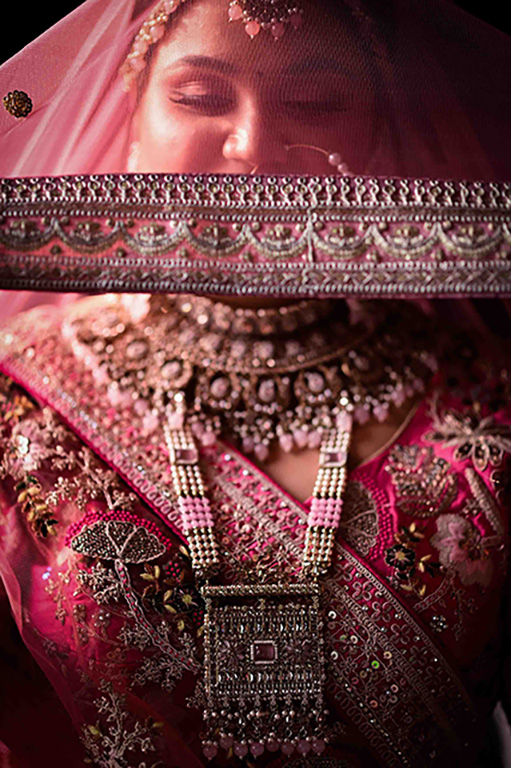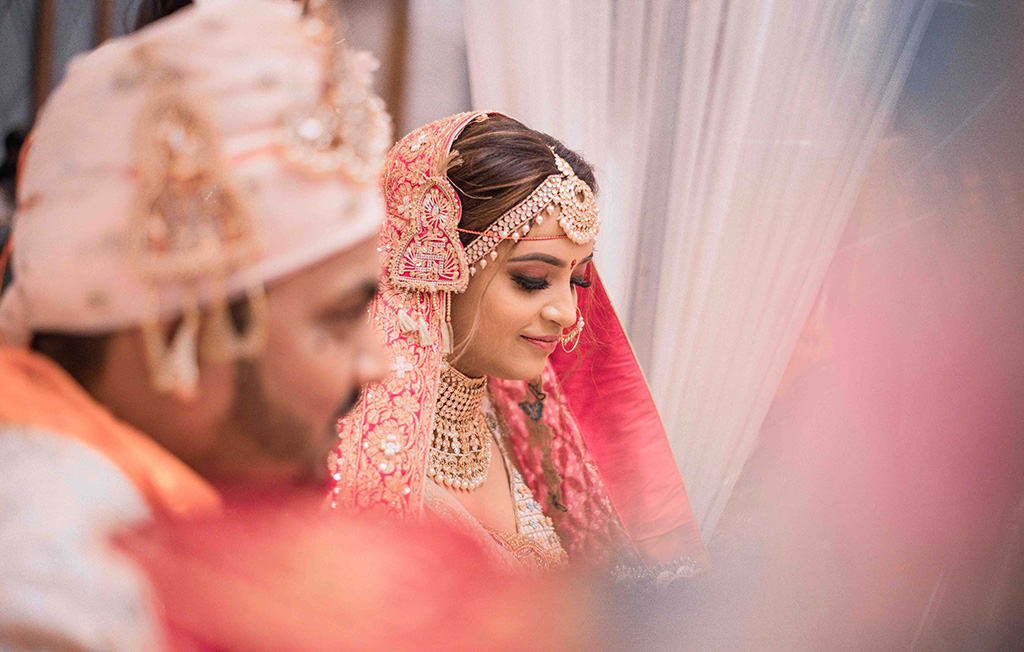Introduction wedding photography
wedding photography is an art form that involves capturing the essence of a couple’s most significant day—one that marks the beginning of their new life together. It is a blend of artistry, emotion, and technical skill that results in a collection of images to preserve memories for a lifetime. As couples embark on their journey of love, a wedding photography has the responsibility of documenting the moments that make their celebration unique and unforgettable.
In this comprehensive guide, we will explore the history, significance, techniques, and best practices of wedding photography. From understanding the importance of wedding photography to the technical aspects of a photographer’s gear, this article aims to provide an in-depth look at this beloved craft.
1. The History of wedding photography
The roots of wedding photography date back to the mid-19th century when wedding photography was first invented. However, it wasn’t until the 1840s that portraits, including wedding photography, began to gain popularity. The earliest wedding photography were formal and posed, as the technology of the time was not advanced enough for spontaneous shots. Couples had to remain still for several minutes for the exposure to capture a clear image.

As photography evolved, so did wedding photography. The introduction of the Kodak camera in the late 1800s made it more accessible to the public, and people began taking their own pictures. The rise of photojournalism in the 20th century influenced wedding photography, leading to more candid shots, capturing emotions and events naturally. By the 1980s and 1990s, digital wedding photography revolutionized the industry, allowing wedding photography to experiment with styles and lighting in ways never before possible. Today, wedding photography encompasses various styles, from traditional posed photos to candid, documentary-style shots.
2. The Importance of wedding photography
A wedding photography is one of the most important events in a person’s life, marking a moment of transformation and the celebration of love. For this reason, wedding photography plays a crucial role in preserving the memories of the day. These photographs serve as a reminder of the vows exchanged, the emotions felt, and the joy shared by everyone present.
wedding photography are not just pictures; they are keepsakes that evoke emotions every time they are looked at. They help couples revisit the laughter, tears, and emotions of their big day and provide a tangible representation of the love and commitment shared between them. Additionally, family members and future generations can also treasure these images as a record of the couple’s legacy.
3. Styles of wedding photography
There are several different styles of wedding photography, each offering a distinct approach to capturing a couple’s special day. Some popular styles include:
Traditional Photography: This style typically focuses on posed wedding photography, with a photographer directing the couple and their guests to create a classic, elegant look. Traditional wedding photography often includes portraits of the couple, family, and bridal party.
Documentary or Photojournalistic Photography: A more modern approach, documentary wedding photography emphasizes capturing moments as they naturally unfold. The wedding photography is less involved in directing the couple or their guests and instead focuses on documenting candid moments, emotions, and details as they happen.
Fine Art Photography: This style is known for its artistic approach, often incorporating creative compositions, lighting, and post-processing techniques. Fine art wedding photography aim to create visually stunning, cinematic images that feel more like works of art than traditional wedding photos.
Fashion-Style Photography: Influenced by the fashion industry, this style often incorporates high-fashion poses, dramatic lighting, and editorial-style compositions. It aims to create glamorous, magazine-worthy photos, with a focus on beauty and style.
Aerial or Drone Photography: With the advent of drone technology, aerial wedding photography has become increasingly popular in wedding photography. Drones can capture stunning overhead shots of the ceremony and reception, offering a unique perspective that traditional wedding photography can’t provide.
4. The Role of the wedding photography
The wedding photography is much more than just a person with a camera. They are storytellers, artists, and professionals who work behind the scenes to ensure every important moment is captured. The role of a wedding photographer can be broken down into several key responsibilities:
Pre-Wedding Consultations: Prior to the wedding photography day, a photographer will typically meet with the couple to understand their preferences, expectations, and vision for the wedding photos. This meeting often includes a discussion about the timeline, locations, and specific shots the couple desires.
Planning and Coordination: On the wedding day, the photographer must be well-organized and prepared. They need to know the schedule of events, the best lighting conditions, and where the most important moments will take place. Coordination with the wedding photography planner, bridal party, and family is essential to ensure a smooth and successful shoot.
Capturing Key Moments: wedding photography are tasked with capturing the big moments, such as the ceremony, the first kiss, the first dance, and the cutting of the cake. However, they must also be skilled at documenting smaller, intimate moments—tears of joy, laughter, and subtle glances between the couple.
Post-Processing and Editing: After the wedding photography typically spend significant time editing and refining the images. This includes adjusting lighting, color correction, and retouching to ensure the photos reflect the couple’s vision and style. The final product is often delivered in a variety of formats, including prints, albums, and digital galleries.
5. Technical Aspects of wedding photography
wedding photography is not just about creativity and artistry; it also requires technical knowledge and the use of specialized equipment. The photographer must be able to work with different lighting conditions, camera settings, and lenses to achieve the desired effect. Here are some key technical aspects of wedding photography:
Camera Equipment: wedding photography typically use high-quality DSLR or mirrorless cameras to ensure sharp, clear images. They also carry backup cameras in case of malfunctions. Lens choices are critical, with wide-angle lenses for group shots and zoom lenses for capturing candid moments from a distance.
Lighting: Lighting is one of the most important factors in wedding photography. wedding photography must be able to work with both natural and artificial lighting. They may use external flashes, soft boxes, and reflectors to create flattering lighting for portraits and group shots. Some wedding photography also use off-camera lighting to create dramatic effects.
Composition: wedding photography need a strong understanding of composition to create visually pleasing images. They must know how to frame shots, use leading lines, and take advantage of the environment to create beautiful, balanced photographs.
Post-Processing: After the wedding photography typically spend hours editing the images. This includes cropping, color correction, retouching, and adding creative effects to enhance the final images. Many photographers use software such as Adobe Lightroom and Photoshop for post-processing.
6. Choosing the Right wedding photography
Selecting the right wedding photography is crucial to ensure the couple’s vision for their wedding photos is realized. There are several factors to consider when choosing a wedding photography:
Style: Couples should first determine the style of wedding photography they prefer. Some may want traditional, posed shots, while others may prefer a documentary-style approach. It’s important to choose a wedding photography whose style aligns with the couple’s vision.
Portfolio: A wedding photography portfolio provides insight into their work and ability to capture moments. Couples should review the portfolio to see if the wedding photography work resonates with them and if the quality of the photos is consistent.
Personality: wedding photography are often present for many hours during the wedding photography day, so it’s essential to choose someone who is friendly, approachable, and professional. A good photographer should also be able to adapt to different situations and work well under pressure.
Experience and Reputation: It’s always advisable to choose a wedding photography with experience in wedding photography. Experienced photographers are better equipped to handle the challenges of the wedding day, such as unpredictable lighting, large crowds, and time constraints. Reading reviews and asking for references can help ensure the wedding photography has a solid reputation.
7. wedding photography Tips for Couples
While the wedding photography plays a crucial role in capturing wedding photography moments, there are also things couples can do to ensure the best results. Here are some tips for couples to get the most out of their wedding photography:
Communicate Your Vision: Before the big day, share your vision for the photos with the wedding photography. Discuss your preferred style, any specific shots you want, and the overall feel you’re hoping to achieve.
Stay Relaxed: It’s natural to feel nervous on your wedding photography day, but try to stay relaxed and enjoy the experience. The more at ease you are, the more natural and genuine your photos will look.
Allocate Time for Photos: Make sure to allocate enough time in your schedule for the photos. Rushed photos rarely turn out well, and it’s important to have some time for portraits, family shots, and candid moments.
Trust Your Photographer: Finally, trust your wedding photography expertise. They are professionals who know how to make the most of the lighting and setting to create stunning images.
Step 1: Master the Craft wedding photography
1.1 Develop Technical Skills wedding photography
Before marketing your services, ensure your wedding photography skills are refined. Key areas to focus on include:
- Camera Mastery: Understand manual settings like ISO, aperture, and shutter speed.
- Lighting Techniques: Practice using natural light, flash, and reflectors.
- Composition: Learn rules of framing, symmetry, and storytelling through visuals.
- Post-Processing: Master photo editing software such as Adobe Lightroom and Photoshop.
1.2 Build a Portfolio wedding photography
A strong portfolio is your most effective marketing tool. To build one:
- Offer free or discounted shoots for friends or family.
- Collaborate with wedding photography planners or stylists to create styled shoots.
- Showcase a variety of styles, including candid moments, posed portraits, and detail shots.
Step 2: Define Your Brand wedding photography
2.1 Establish Your Unique Style wedding photography
Identify what sets you apart. Whether it’s your artistic approach, editing style, or ability to capture emotions, make this a hallmark of your brand.
2.2 Create a Professional Identity wedding photography
- Logo and Name: Develop a memorable business name and logo.
- Website: Build a clean, visually appealing website that includes your portfolio, about section, and contact information.
- Social Media Presence: Use platforms like Instagram and Pinterest to share your work and engage with potential clients.
Step 3: Build a Reputation wedding photography
3.1 Provide Exceptional Client Experiences wedding photography
Word-of-mouth recommendations are invaluable in the wedding photography industry. To foster them:
- Communicate clearly and promptly with clients.
- Go above and beyond during shoots to make clients feel special.
- Deliver high-quality images on time.
3.2 Network Within the Industry wedding photography
- Collaborate with Vendors: Build relationships with wedding photography planners, florists, venues, and makeup artists.
- Attend Wedding Shows: Showcase your work at bridal expos to connect with potential clients and industry peers.
- Join Professional Associations: Membership in groups like the Wedding & Portrait wedding photography International (WPPI) can enhance credibility.
3.3 Collect and Showcase Reviews wedding photography
Ask satisfied clients to leave testimonials on platforms like Google, Yelp, or your wedding photography website. Positive reviews can significantly influence potential clients.
Step 4: Market Effectively wedding photography

4.1 Use Digital Marketing wedding photography
- SEO: Optimize your website to rank for local wedding wedding photography keywords.
- Social Media Ads: Run targeted ads on Instagram and Facebook.
- Blogging: Write articles about wedding photography tips or showcase recent shoots to attract organic traffic.
4.2 Partner with Wedding Platforms wedding photography
Partnering with wedding photography platforms is a powerful strategy to expand your reach and establish credibility in the industry. These platforms serve as a bridge between photographers and couples planning their weddings, providing access to a vast audience actively searching for services. Here’s how to effectively leverage wedding photography platforms to grow your business:
4.2.1 Understand the Benefits of Wedding Platforms wedding photography
- Increased Visibility: Platforms like The Knot, wedding photography Wire, and Zola are popular among engaged couples and can significantly boost your exposure.
- Targeted Audience: These platforms attract users specifically looking for wedding-related services, ensuring your marketing efforts reach a relevant audience.
- Credibility: Being listed on reputable wedding photography platforms enhances your professional image and builds trust with potential clients.
- Lead Generation: Many platforms offer tools to help you track inquiries, respond to leads, and manage bookings.
4.2.2 Choose the Right Platforms wedding photography
Research and select platforms that align with your target market and business goals. Consider factors such as:
- Regional Popularity: Some platforms may have a stronger presence in certain geographic areas.
- Cost: Evaluate the subscription fees or commission structures.
- Features: Look for platforms that offer analytics, marketing tools, and customizable profiles.
4.2.3 Create a Compelling Profile wedding photography
Your profile is the first impression couples will have of your business. To make it stand out:
- Showcase Your Best Work: Include high-quality images that highlight your style and expertise.
- Write a Captivating Bio: Share your story, approach to wedding photography, and what makes your services unique.
- Client Reviews: Feature testimonials from satisfied clients to build trust.
- Pricing Information: Provide transparent pricing or package details to help couples make informed decisions.
4.2.4 Engage Actively wedding photography
Maximize the benefits of wedding photography platforms by staying active:
- Respond Quickly: Promptly reply to inquiries to show professionalism and enthusiasm.
- Update Regularly: Keep your profile fresh by adding new photos, reviews, and content.
- Participate in Forums: Engage with users in discussion boards or forums to showcase your expertise.
4.2.5 Leverage Advertising Opportunities wedding photography
Many platforms offer paid advertising options to increase your visibility. Consider investing in features like:
- Featured Listings: Appear at the top of search results.
- Sponsored Content: Promote your services through platform blogs or newsletters.
- Exclusive Deals: Offer discounts or packages to attract more bookings.
4.2.6 Track and Analyze Performance wedding photography
Use the analytics tools provided by wedding photography platforms to measure your success. Monitor metrics like:
- Profile Views: Track how often your profile is viewed.
- Inquiry Rates: Measure the number of inquiries you receive.
- Conversion Rates: Assess how many inquiries turn into bookings.
4.2.7 Build Relationships Through Platforms wedding photography
wedding photography platforms often host events or webinars for vendors. Participate in these opportunities to network with industry professionals, learn best practices, and gain insights into market trends.
4.2.8 Diversify Your Presence wedding photography
While focusing on major platforms, don’t overlook niche platforms that cater to specific demographics or regions. These can be valuable for targeting unique client segments.
Step 5: Financial Planning and Growth wedding photography
5.1 Price Your Services Strategically wedding photography
Start with competitive pricing to build your client base, then gradually increase rates as your reputation grows.
5.2 Diversify Revenue Streams wedding photography
- Offer prints, albums, and other products.
- Provide engagement or anniversary shoots.
- Conduct wedding photography workshops for aspiring photographers.
5.3 Invest in Your Business wedding photography
Reinvest a portion of your profits into better equipment, marketing, and education to continuously improve.
Step 6: Expand and Evolve wedding photography
6.1 Hire and Train Assistants wedding photography
As demand grows, consider hiring second shooters or assistants to manage larger events. Training your team ensures consistency in the quality of work and helps you cover more extensive or simultaneous events. Assistants can also take on administrative tasks, allowing you to focus on creativity and client interactions.
6.2 Stay Current wedding photography
Trends in wedding photography evolve. Stay ahead by:
- Learning New Techniques: Experiment with different wedding photography styles, such as drone photography or cinematic videography.
- Attending Workshops and Conferences: Engage with industry experts and peers to expand your skills and stay updated on the latest tools and technologies.
- Following Industry Blogs and Social Media: Regularly check platforms like Instagram, Pinterest, and wedding magazines to understand current trends.
6.3 Scale Your Business wedding photography
Scaling your wedding photography business can open up new opportunities and revenue streams. Here’s how:
- Destination Weddings: Expand your services to include destination weddings. This requires additional planning and marketing but can attract a high-end clientele.
- Form a Team: Build a team of skilled wedding photography under your brand. This allows you to book multiple events on the same day, increasing your income potential.
- Create a Studio: Consider opening a wedding photography studio to offer additional services such as pre-wedding shoots, family portraits, or boudoir wedding photography.
6.4 Develop Partnerships wedding photography
Collaborate with venues, planners, and other vendors to offer bundled services. Being part of a preferred vendor list can increase your bookings and establish your credibility in the industry.
6.5 Focus on Client Relationships wedding photography
Long-term success depends on strong client relationships. Maintain communication with past clients, and offer anniversary shoots or family sessions. Happy clients are more likely to refer you to their network.
6.6 Adapt to Technological Changes wedding photography
Invest in cutting-edge equipment and software to enhance your services. Explore tools like AI-powered editing software, cloud storage for easy image delivery, and advanced cameras for superior image quality. Technology can streamline your workflow and provide a better client experience.
6.7 Build Passive Income Streams wedding photography
- Online Courses: Teach aspiring wedding photography through online classes or tutorials.
- Sell Stock Photos: Use images from weddings to create a portfolio of stock wedding photography.
- Write a Book or Blog: Share your expertise through a book or blog, establishing yourself as an authority in the field.
6.8 Expand Your Marketing Efforts wedding photography
- YouTube Channel: Start a channel to showcase your work, share behind-the-scenes footage, or provide tips for couples planning their weddings.
- Podcast: Host a podcast about wedding photography or the wedding photography industry to reach a broader audience.
- Collaborate with Influencers: Partner with wedding photography influencers to feature your work and attract new clients.
6.9 Stay Resilient and Innovative wedding photography
Adaptability is key to staying relevant in a competitive market. Monitor client feedback, market trends, and industry developments. Be open to experimenting with new ideas to ensure your business continues to thrive.

Conclusion wedding photography
Building a reputation and growing a wedding photography business requires dedication, strategic planning, and a commitment to excellence. By mastering your craft, creating a strong brand, and delivering exceptional client experiences, you can establish a thriving business in this competitive field. Remember, success comes from a combination of passion, persistence, and adaptability. By continuously expanding and evolving, your business will be well-positioned to achieve long-term success in the ever-changing wedding photography industry.
Understanding the couple is the cornerstone of successful wedding photography. By investing time and effort into building a connection, learning their story, and aligning on a vision, wedding photography can create images that resonate deeply with the couple and their loved ones. This personal approach not only elevates the quality of the wedding photography but also enhances the overall experience, turning a single day into a lifetime of cherished memories.
wedding photography is a blend of technical expertise, artistic vision, and a deep understanding of the emotional significance of the day. It is a crucial element in capturing the joy, love, and memories of a couple’s wedding photography day. From traditional posed shots to candid moments, the role of a wedding photography is to document the essence of the celebration. By understanding the different styles of wedding photography, the role of the wedding photography, and the technical aspects involved, couples can make informed decisions and create lasting memories of their special day.














